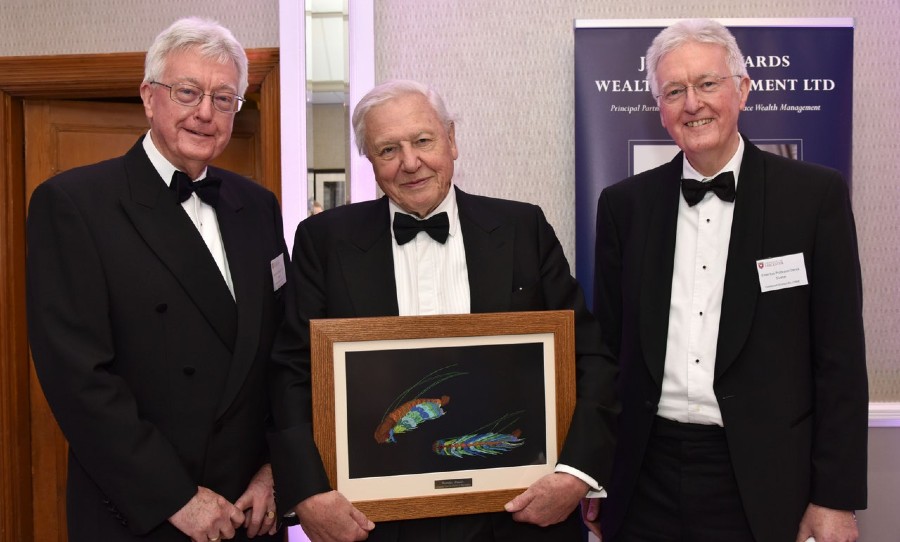It’s seriously about time they named a prehistoric horseshoe crab fossil after our favourite British broadcaster, Sir David Attenborough.
It’s just a shame that it’s a 200 million-year-old fossil he’s named after, considering he is almost 100 years old.
But, just like diamonds, fossils are forever, and so is our love of Attenborough, who has been inspiring and doing his thing for more than 60 years.

Attenborough has received many awards over the years for his contribution to the world of conservation and science, so it only fits that they name something after him.
But guess what? This is not Attenborough’s first fossil rodeo.
In 2017, the British naturalist had a 430 million-year-old fossil named after him. It was discovered ‘frozen in time’ in ancient volcanic rock in Herefordshire, UK.
The tiny (less than 1cm long) crustacean was named Cascolus Ravitis (Latin rendering of the Old English equivalent to Attenborough).
Ravitis references the Roman name for ‘Leicester’ where Attenborough lived on the city’s university campus.
Researchers from the universities of Oxford, Leicester, Yale and Imperial of London collaborated for this fossil name. Attenborough said at the time,
“The biggest compliment that a biologist or palaeontologist can pay to another one is to name a fossil in his honour, and I take this as a very great compliment.”
Attenborolimulus superspinosus … How cool! They discovered a new fossil species of horseshoe crab (& named it after David Attenborough) https://t.co/dFonm9QLVL
— Minmi Paravertebra (@Wheres_Minmi) June 30, 2021
Fast forward to the 2021 fossil discovery: Horseshoe crabs are particularly rare, being creatures with only four known species in existence.
According to researchers at the University of New England in Australia, these creatures were abundant back in the day – y’know, hundreds of million years ago.
Its newly found scientific name, wait for it, is Attenborolimulus superspinosus, which lived in the Triassic period.
At that time, horseshoe crabs evolved into a calibre of shapes and sizes known to scientists as austrolimulids.
A post-doctoral researcher at the University of New England, Russel Dean Christopher Bicknell, has said that: “they lived alongside horseshoe crabs that look broadly similar to limulids – the curious critters we see along the beaches of the United States and Asia today.”
Recently in 2018 and 2019, a collection of unique rocks and fossils dating back to the Triassic period was discovered in the Russian Ural Mountains.
Check out the lengthy list of other species and objects to be named after the one and only Sir David Attenborough here.



